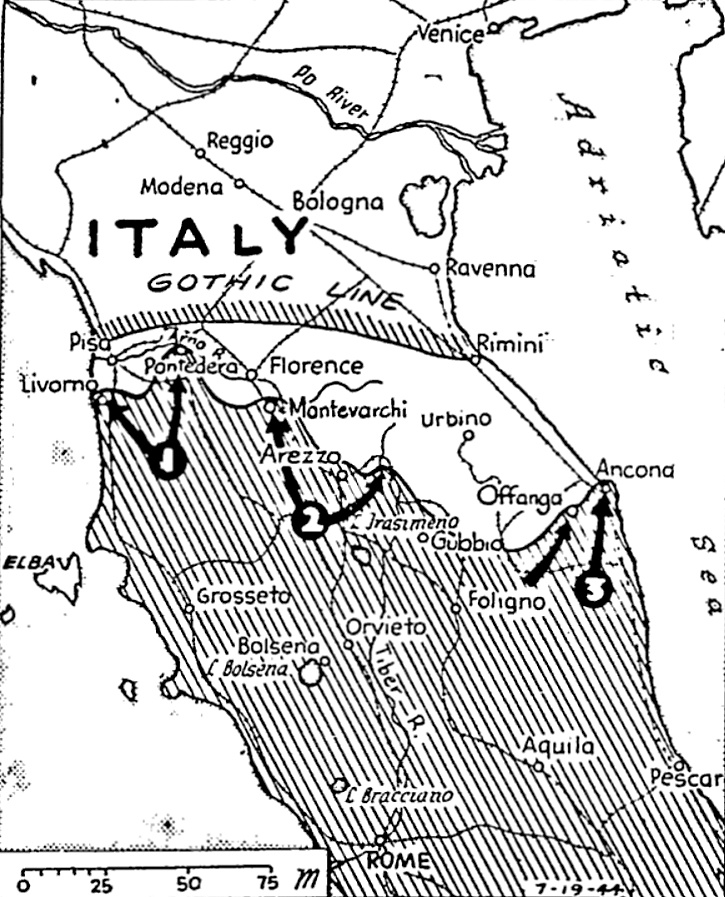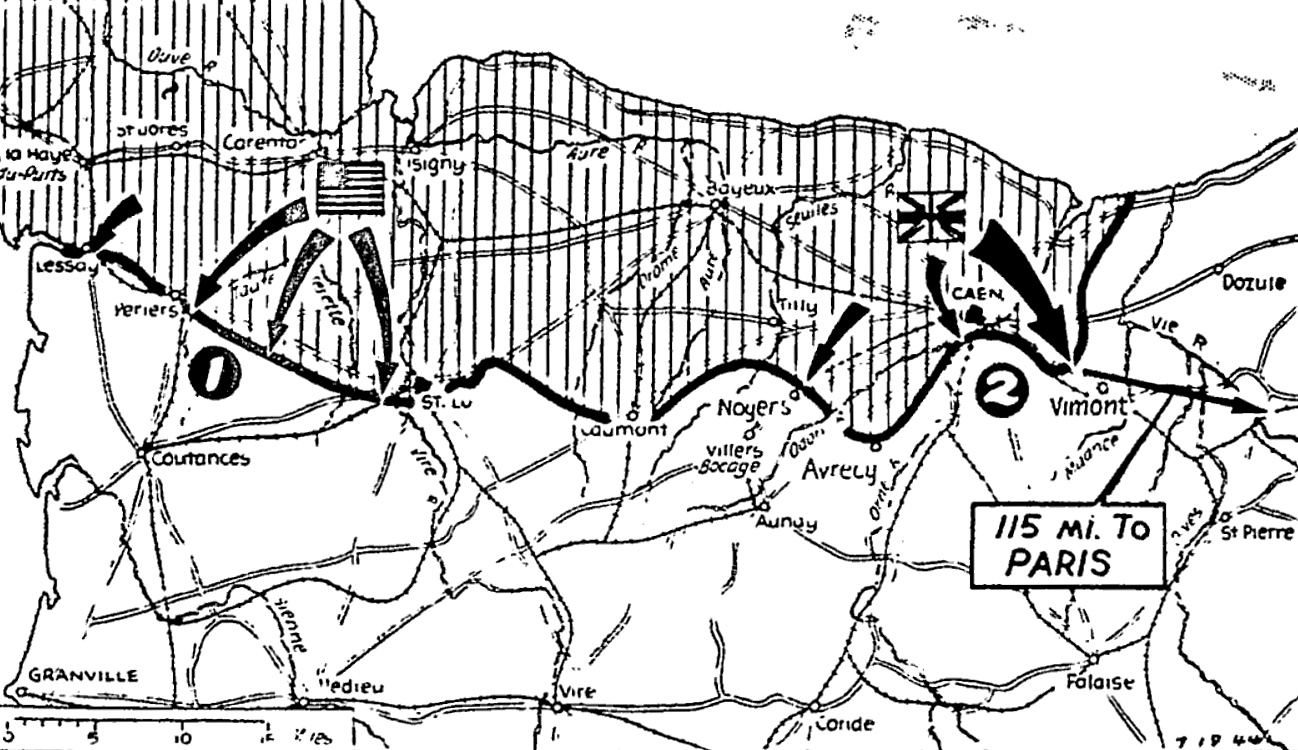The Pittsburgh Press (July 19, 1944)
LIVORNO FALLS TO 5TH ARMY
Yanks, Poles crumple ends of line in Italy
Allies take Ancona, east coast port
By Reynolds Packard, United Press staff writer
New victory in Italy was achieved by U.S. forces in the capture of Livorno (1), west coast anchor of the Nazi line. U.S. troops drove toward Pisa. In central Italy, the British crossed the Arno River and captured Montevarchi (2), while on the east coast, Polish troops captured Ancona (3), Adriatic anchor of the German defenses.
Rome, Italy –
U.S. troops captured the great Tyrrhenian port of Livorno today, crumbling the western anchor of the German defenses across Italy in the biggest Allied victory of the Italian campaign since the fall of Rome.
Livorno fell to the U.S. units of Lt. Gen. Mark W. Clark’s 5th Army soon after Allied headquarters announced that Polish forces had captured Ancona, the Adriatic anchor of the Nazi defense line.
The twin victories at either end of the Italian line unhinged the hard-pressed German defenses and cleared the way for a frontal onslaught against the Gothic Line, before which the Nazis were struggling to make their first stand after a precipitate flight from Rome.
Port wrecked
Virtually all the port facilities of Livorno, pre-war city of 200,000, had been destroyed by the Germans to prevent their use by the Allies as a gateway of supplies and reinforcements.
The city’s many big bridges, the only contact with the mainland, were also wrecked by the Nazis in an extreme application of the scorched earth policy.
Livorno fell to U.S. forces who had swung around it in a wide flanking maneuver and closed in from the east while other units were smashing through the formidable German fortifications guarding its southern approaches.
Push on Pisa
Front dispatches said the Germans were fighting a rearguard action near Livorno as a U.S. spearhead probed up the Arno Valley toward Pisa.
Although pushed out of Livorno, the Germans took up positions on high round north of the city and sent a continuous barrage on Livorno’s 60 docks. Even as the shells exploded, however, U.S. engineers were rebuilding the city’s battered harbor facilities which are expected, to prove of enormous value to the Allies as a supply center.
Take 2,500 prisoners
During the drive over the Cecina River, Allied troops captured approximately 2,500 prisoners, and inflicted thousands of casualties on the Germans. Since May 11, the 5th Army has taken 30,000 prisoners.
Ancona fell yesterday afternoon to Polish units of the 8th Army as the culmination of their 75-mile advance in the last few weeks. The Germans had concentrated two divisions to defend the anchor base which has a peacetime population of 95,000. The Poles badly mauled the divisions and took more than 2,000 prisoners.
The whole eastern wing of the German defenses crumpled. Other elements of the 8th Army took Offagna, eight miles southwest of Ancona, after a tough fight lasting several days.
Cross upper arms
In central Italy, British troops of the 8th Army crossed the upper Arno on a front of six miles, and to the west captured Montevarchi, 15 miles from Arezzo.
High ground just east of Città di Castello, 18 miles northwest of Gubbio in the Tiber Valley, fell to the 8th Army. Other forces established themselves upon Hill 974, four miles due east of Arezzo.
On the lower Arno below Pisa, the American drive to the river at captured Pontedera placed the Americans astride the Pisa–Florence road and split the German forces south of the Arno.
Jap-Americans gain
The Americans were consolidating the southern bank of the Arno around Pontedera, 6½ miles north of Livorno and about two miles southeast of Monte Pisano, a hill mass which dominates the western valley of the Arno as well as Livorno and Pisa.
To the east, the doughboys, including troops of Japanese descent, rushed two miles past Le Sorgenti, five miles from Livorno. The 5th Army also took Badalucco, 10 miles east of Livorno. Still farther east, Allied forces advanced up to two miles despite devastating mortar and machine-gun fire and “tremendous” artillery barrage, as well as some of the thickest minefields encountered in Italy.



